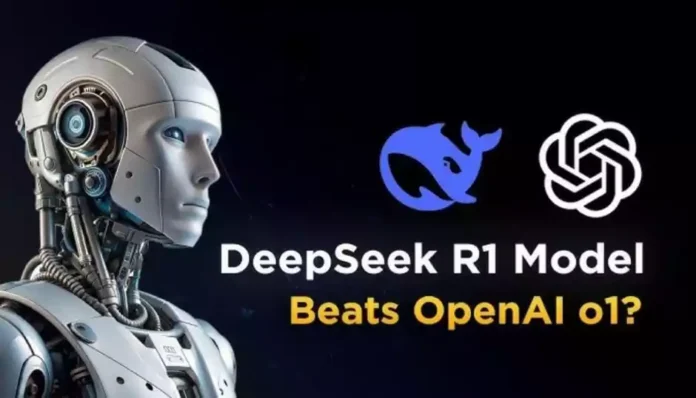China’s DeepSeek: The New Buzz in the World of AI
In the fast-paced and ever-evolving landscape of artificial intelligence (AI), China’s DeepSeek has emerged as the latest sensation, shaking up the industry with its cutting-edge innovations and accessible design. From its affordable price to its open-source nature, DeepSeek is making waves globally, redefining the competitive dynamics of the AI sector.
What is DeepSeek and Why is It Different?
DeepSeek is a subsidiary of High-Flyer Capital Management, a quantitative analysis firm launched in 2015. Until recently, the company was largely unknown outside of niche AI circles. That changed with the release of DeepSeek-R1, a large language model (LLM) capable of performing advanced reasoning tasks.
Unlike many AI models that deliver quick responses but limited analytical depth, DeepSeek-R1 excels at “chain of thought” reasoning. This means that the model takes its time to analyze complex problems step by step, which is similar to OpenAI’s top-tier model, o1. However, where DeepSeek really differs is its efficiency. According to Wired, DeepSeek-R1 was trained at a cost of around $5 million, which is much less than what OpenAI invests in its models, while facing restrictions on access to advanced GPUs.
Cost-effective and accessible AI
One of the reasons DeepSeek has gained global attention is its affordability. According to Analytics Vidhya, the API cost for DeepSeek-R1 is more than 90% lower than OpenAI’s equivalent models. This makes it an attractive option for small businesses, startups, and individual developers who previously found such advanced AI tools financially out of reach.
Additionally, DeepSeek-R1 is completely open-source. Unlike OpenAI’s proprietary models, DeepSeek allows developers to modify and fine-tune the model for specific tasks. As noted in Nature, this has sparked innovation around the world, with developers adapting the model for mobile applications, integrating it with other devices, and even creating task-specific variations.
Performance rivalling industry leaders
DeepSeek-R1’s performance is another reason for its meteoric rise. The model matches or surpasses OpenAI’s o1 in several benchmarks such as coding, mathematics, and logical reasoning. According to the Financial Times, this level of capability – combined with its affordability – has established DeepSeek as a serious competitor to Silicon Valley giants.
Its open-source nature has further boosted its popularity, as it quickly climbed the ranks of AI sharing platforms such as Hugging Face. Developers have praised the model for its flexibility, with many pointing to its potential to become as revolutionary as Google’s Android in the world of operating systems.
Top AI Voice Generators in 2024 – Free & Best Text-to-Speech Tools
Challenging the status quo in AI
The emergence of DeepSeek has caused a stir in the tech industry, leading to comparisons between OpenAI and Meta’s AI models. Meta, in particular, is reportedly concerned about how quickly DeepSeek has outperformed its Llama models, which were also designed to dominate the open-source AI space.
Industry commentators such as X user @tphuang have highlighted the model’s key advantages: its speed, cost-efficiency, and the control it gives users by allowing them to run models independently of any central server. It marks a clear departure from reliance on centralized AI providers such as OpenAI.
Controversy over censorship
Despite its phenomenal success, DeepSeek has not been immune to criticism. Operating from China, the company is subject to the country’s laws and regulations, including strict content censorship. Wired reports that DeepSeek-R1 avoids answering questions about sensitive topics, such as the Tiananmen Square protests of 1989.
While this raises concerns about freedom of information, critics also point out that OpenAI’s models ban a wide range of topics, including human sexuality and other controversial subjects. This highlights the broader challenges that AI companies face in balancing openness with security and compliance.
7 Free AI Tools You Won’t Believe Exist
A glimpse into the future
DeepSeek’s rapid rise is a sign of broader changes in the AI landscape. It demonstrates the potential for innovation in regions outside of Silicon Valley, challenging the dominance of Western tech giants. As The Economist noted, DeepSeek’s success is also evidence of China’s persistence in overcoming US export controls on advanced technologies.
By providing high-performance models at a low cost, DeepSeek is democratizing AI, making advanced tools accessible to a wider audience. This has raised questions about the sustainability of the current pricing model adopted by companies like OpenAI, especially when DeepSeek offers comparable capabilities at a significantly lower cost.
What’s next for DeepSeek?
The introduction of DeepSeek-R1 has changed the conversation around AI. It has proven that cutting-edge technology does not require excessive costs or should not be restricted to only elite companies. As the global AI community continues to experiment with and build upon DeepSeek-R1, the model’s potential for further innovation remains enormous.
However, the road ahead is not devoid of challenges. Content censorship and geopolitical concerns may limit DeepSeek’s adoption in some markets. Still, its open-source approach and affordability ensure that it will remain a topic of discussion in the near future.
The rise of DeepSeek is more than just a technological breakthrough; it is a warning to the AI industry. It underscores the importance of innovation, affordability, and accessibility in shaping the future of artificial intelligence. As the world watches, DeepSeek is set to play a key role in the next chapter of AI evolution.


